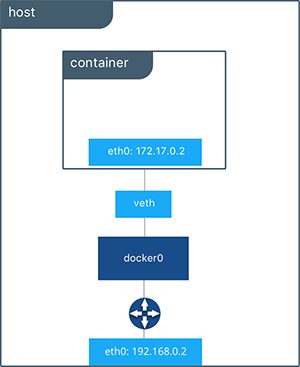
This is a useful feature in organization your address spaces as you plan a large deployment of container application clusters. This ensures that there is no accidental IP overlap, and allows the network administrator to allocate a large pool (say a /18 or /20) to the container infrastructure, leaving the detailed division of that pool to the application developers. If the user manually went into the grid master (GM) user interface and allocated, say, 10.10.4.0/24 and 10.10.5.0/24, then the next Docker network would get allocated as 10.10.6.0/24.
Docker for mac subnet driver#
For example, if we started up the driver with Infoblox network container as “10.10.0.0/16” and a default prefix length of “24”, then allocating several networks in a row without the –subnet option would allocate 10.10.0.0/24, 10.10.1.0/24, 10.10.2.0/24, 10.10.3.0/24. In Infoblox terminology, this larger pool is called a “network container” (not to be confused with a Docker container). Our driver provides options passed at driver startup that anchor these “next available networks” in a larger pool. In our driver, we provide the next available network in this case meaning, the next subnet of the appropriate size that is available. This allows the IPAM driver to decide on the subnet, using whatever logic or criteria are established by the driver. Optionally, the user can leave the subnet selection up to the IPAM system: docker network create -driver bridge -ipam-driver infoblox redĬreates a bridge network but does not pass any subnet into the IPAM driver. The IPAM driver is invoked here with a “RequestPool” call to allocate the specified subnet.

For example: docker network create -driver bridge -ipam-driver infoblox -subnet 10.1.1.0/24 blueĬreates a bridge network blue with the specified subnet, using the infoblox IPAM driver (which has previously been started as a container, and has registered itself with the docker daemon via an API – more details below).
Docker for mac subnet drivers#
In either case, you must specify the IPAM and network drivers to use, and can optionally specify a subnet. This can be run manually, or by an orchestrator. In Docker, networks are created using the docker network create command. In this post, we will focus on Docker, with a later post showing similar functionality using CNI. The Docker container networking model (CNM), and the competing Container Network Interface (CNI), enable the creation and management of these networks to serve all of these use cases and more. Alternately, you may have pre-defined networks or VLANs within your environment to which you would like to attach containers. If each microservice has its own subnet, this can also simplify any security rules used to control traffic between microservices.

You can also create a common shared network across multiple hosts of cooperating applications and associated microservices.

You can create separate networks for different microservices based applications across multiple-hosts that do not need to interact, therefore isolating the traffic between containers.

Near the end, we will build a real example of a 3 node cluster configured to share a network. Our focus in this post is around the User Defined Network and more specifically the bridge type. In this paper we examine the details of the Infoblox Docker IPAM driver for specific use cases and including command syntax. In a complex container deployment is important to have a service like Infoblox IPAM to help maintain consistency in a very dynamic multi-host environment dealing with IP address and network creation and deletions. Docker requires the services of an IPAM infrastructure to enable the creation of network address spaces/pools, subnets and the allocation of individual IP addresses for the container-based microservices. As you saw in my previous blog How Docker Networking Works and the Importance of IPAM Functionality, Docker’s networking model enables 3rd party vendors to ‘plug-in’ enterprise class network solutions.


 0 kommentar(er)
0 kommentar(er)
